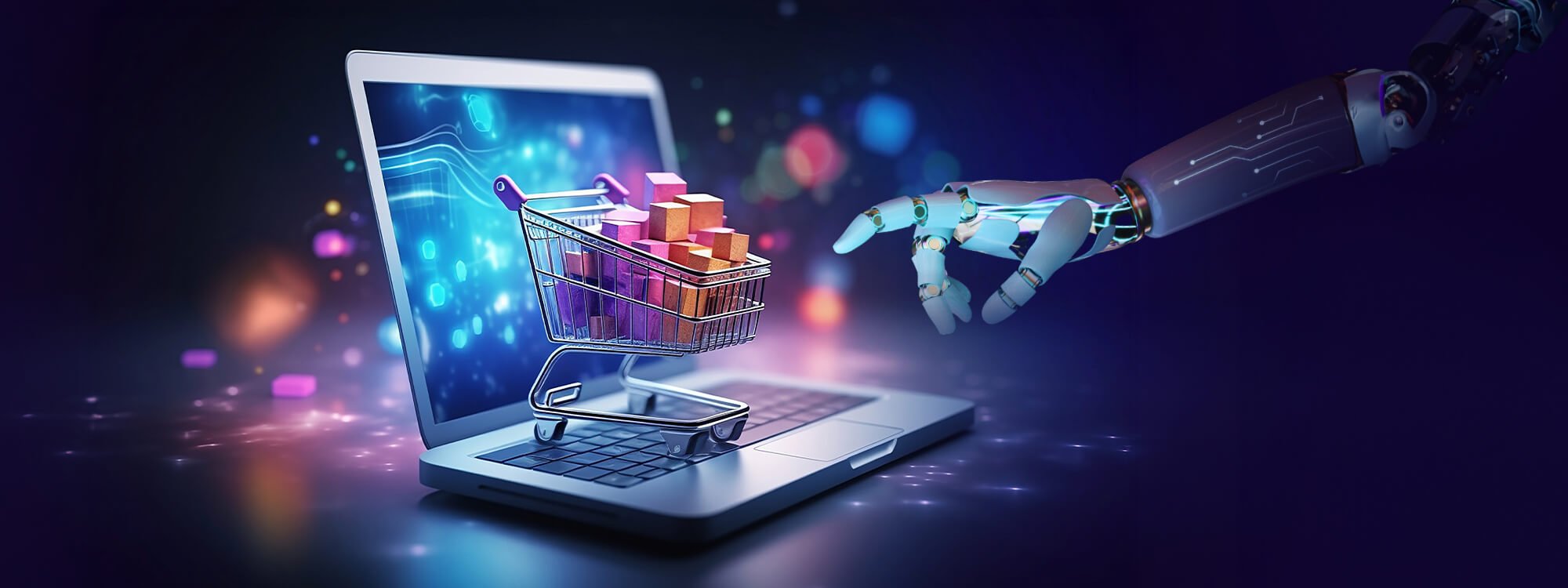Home / Our thinking / Insights / Top five AI-driven use cases from supply chain experts
Top five AI-driven use cases from supply chain experts

Table of contents
NashTech, in collaboration with the Chartered Institute of Logistics and Transport (CILT), has teamed up with supply chain industry experts to tackle some of the biggest challenges in supply chain and logistics management. Together, we've explored how AI can unlock new opportunities for optimisation, transformation, and smarter decision-making—helping businesses reduce risk, save costs and improve efficiency.
Through this deep dive into AI-driven innovation, industry experts identified five key areas where AI can deliver the most impact. Below are some of the highest-ranked solutions poised to reshape the future of supply chain and logistics.
1. Legacy systems integration
Many logistics companies and government agencies still rely on slow and outdated legacy systems, software that has been used for decades. While these systems were once state-of-the-art, they now face several challenges, including high maintenance costs, poor integration with more modern technologies, and security vulnerabilities. Replacing an entire system can be costly upfront and time-consuming to deploy, but AI can potentially help.
How AI can help.
AI can act as a bridge between these legacy systems and modern platforms. Instead of completely replacing old software, AI-powered bolt-on tools can refactor code, automate processes, and enhance data integration, keeping existing systems useful while reducing costs.
Why might this be a good use case?
Upgrading or replacing legacy systems will undoubtedly incur costs. AI can extend a legacy system's lifespan, reducing the need for costly overhauls. Instead, businesses can upgrade gradually, over time, at a pace they can control, without downtime. They can automate outdated processes, improving speed and accuracy whilst keeping existing software functional for longer.
What action can be taken now?
Businesses should focus on identifying inefficiencies, data gaps, and integration challenges within their current legacy systems. By leveraging AI-powered tools, they can seamlessly connect and optimise data flow between both legacy and modern systems. To ensure the most effective transformation, it's important to prioritise key functions, focusing on integrating AI into high-impact processes such as inventory management, predictive maintenance, and real-time tracking, which can significantly enhance operational efficiency and decision-making.
And plan for scalability. Yes, long-term legacy systems will need heavy modernisation or replacement at some point. But now, you can choose AI solutions that can adapt and evolve as your business needs grow.
2. Predictive stock optimisation
Businesses often struggle with the delicate balance of maintaining enough stock to meet customer demand while avoiding excess inventory that ties up capital and increases storage costs. Traditional inventory management methods rely on static forecasts, which can sometimes lead to over or understocking, resulting in either high warehousing costs and waste, or running out of stock, leading to a loss in sales, unhappy customers and additional costs associated with rush restocking (e.g., expedited shipping costs). Getting the balance of stock wrong can also mean inefficient order fulfilment, such as delays and strained supplier relationships.
How AI can help.
Predictive stock optimisation leverages data-driven insights to refine inventory management, reducing costs while ensuring stock availability aligns with actual demand.
AI can transform stock management by using predictive forecasting, intelligent decision-making, and real-time data analysis.
AI can be used to analyse online trends via social media, news, etc., to anticipate shifts in demand before they happen. For example, a sudden viral trend could indicate a spike in product demand. AI can also factor in supply chain variables such as transit times, seasonal delays, and shipping disruptions (such as geopolitical events and weather patterns) to predict when stock will arrive and adjust orders accordingly.
Why might this be a good use case?
By leveraging AI for predictive stock optimisation, businesses can reduce stock holding costs, prevent over/under stocking, and improve order fulfilment efficiency, all while responding proactively to market changes.
What action can be taken now?
Organisations should integrate AI-powered demand forecasting tools into their ERP systems to automate stock adjustments, improve inventory accuracy, and enhance supply chain visibility. Machine learning can analyse purchasing behaviours, predict demand fluctuations, and optimise order management, reducing costs and preventing stock issues.
3. Future demand prediction
Traditional demand prediction models rely heavily on historical data, making them ineffective in responding to sudden market shifts, emerging trends, and unforeseen disruptions. These models often fail to capture real-time influences such as changing consumer behaviour, economic fluctuations, and supply chain disruptions, leading to inaccurate forecasts, stock imbalances, and missed opportunities.
How AI can help.
AI enhances demand prediction by using machine learning and generative AI to analyse vast datasets in real time, identifying patterns and trends that traditional or historical models might miss. Machine learning continuously refines forecasts by incorporating dynamic factors like market trends, economic shifts, and external disruptions. Generative AI can simulate various demand scenarios, helping businesses prepare for fluctuations and optimise inventory, production, and supply chain decisions with greater accuracy.
Why might this be a good use case?
This is a strong AI use case because demand prediction involves complex, dynamic variables that traditional statistical models struggle to process effectively. AI can analyse vast amounts of structured and unstructured data, such as real-time market trends, consumer behaviour, and external disruptions, adapting predictions as new data emerges. Unlike static historical models, AI-driven forecasting continuously learns and improves, reducing errors, optimising inventory, and enhancing decision-making. The ability to anticipate demand fluctuations more accurately leads to cost savings, reduced waste, and improved customer satisfaction, making AI a game-changer for businesses managing supply chains.
What action can be taken now?
Businesses should integrate AI-based predictive analytics into their supply chain management to enhance demand forecasting accuracy. By leveraging AI-powered tools, they can analyse historical data alongside real-time market signals to identify emerging trends and adjust procurement strategies accordingly. Implementing machine learning models allows for continuous improvement in predictions, helping businesses reduce stock imbalances, optimise inventory levels, and improve overall supply chain efficiency.
4. Optimising defence logistics
This AI use case addresses a critical challenge in government defence logistics, determining the best way to allocate resources effectively for future scenarios. Governments must balance direct investments in logistics infrastructure (such as warehouses, transportation fleets, or supply depots) with strategic partnerships (such as outsourcing to private logistics firms or collaborating with international allies).
How AI can help.
AI can help reduce waste, avoid unnecessary expenses, and make every pound, dollar, euro spent on defence logistics more effective. An AI-driven model can analyse various data sources, historical logistics performance, geopolitical risks, economic trends, and emerging technologies, to provide recommendations on when to invest in assets directly versus when to rely on partnerships.
Why might this be a good use case?
AI can simulate different future scenarios, helping governments understand the most cost-effective strategies for various contingencies. Instead of relying on manual assessments, AI can quickly process vast amounts of structured and unstructured data to highlight the best course of action. And by analysing geopolitical and economic conditions, AI can predict potential disruptions and recommend contingency plans.
What action can be taken now?
Governments should integrate AI with existing logistics and procurement databases to pull together relevant insights and implement machine learning models that continuously update recommendations as new data becomes available.
They can also be encouraged to develop AI models that can test different logistics scenarios (e.g., supply chain disruptions, conflict zones, natural disasters).
By adopting AI in this area, governments can make more informed, strategic logistics decisions, improving resilience and efficiency in their supply chains while identifying the best value-for-money strategies. While these challenges are critical for government and defence logistics, they are equally prevalent in—and deeply impact—the private sector as well.
5. Quantifying the economic impact of national security logistics
One of the most complex challenges in defence logistics is assigning a monetary value to national security improvements driven by optimised logistics. Unlike commercial supply chains, where efficiency is measured in cost savings, speed, and profitability, defence logistics has broader implications, ranging from military readiness to geopolitical stability.
It's difficult to measure because there are many intangible benefits (such as increased security and improved strategic positioning, which are difficult to express in direct financial terms), and because the true benefits of the Government's investments in logistics infrastructure may not be immediately visible but can prevent future crises.
How AI can help.
AI-powered models can help design and improve logistics supply chains by using data to predict future needs, test different scenarios, and estimate the financial impact of logistics decisions.
Why might this be a good use case?
This would be an excellent use case because AI could help predict and prevent problems like supply shortages or slow responses, which can not only save money and improve security, but also ensure that troops, supplies, and equipment are available when and where they are needed, avoiding costly last-minute fixes.
It can also test different logistics plans for both normal and emergency situations, showing which options save the most money and work best. These AI simulations could help governments plan better by testing different logistics strategies before real-world implementation, reducing risks and unnecessary spending.
What action can be taken now?
- Commit to clear goals to measure how better logistics will improve military readiness and save money.
- Use virtual models to test different logistics plans in real-time and see their financial impact.
- Make sure AI-driven cost estimates fit within defence budgets to help government leaders make smarter spending decisions.
- AI should learn from real-world data to get better at measuring security benefits.
The NashTech-CILT Supply Chain and Logistics AI Roundtable highlighted a strong demand for AI-driven solutions in supply chain and logistics, with businesses eager to adopt high-value, practical applications. From predictive stock optimisation to future demand forecasting, AI has the potential to revolutionise supply chain efficiency, reduce costs, and enhance decision-making.
At NashTech, we specialise in implementing AI solutions that drive real impact, bridging departmental silos, optimising cross-process workflows, and augmenting human expertise rather than replacing it.
Many business leaders acknowledge the value of these ideas but lack the time to thoroughly assess their operations or identify the right partner to support their transformation. That’s precisely where we come in. At NashTech, we specialise in advising, guiding, and partnering with organisations to turn strategic ambitions into measurable, differentiated outcomes. If you're ready to move from “what if” to “what’s next,” contact us.
Suggested articles

Use cases of generative AI in retail: introducing a new era
Generative AI has become an overnight global sensation, bringing sweeping changes to businesses, industries and the everyday layperson. Over the last...

Why a technology advisory partner is vital for business success?
The relationship between technology advisory and business success Adoption of technology has reached an all-time high since the global pandemic, with...

Digital begins in the boardroom
Magnus Tegborg, CEO, and Catharina Mannerfelt, Partner at Alumni, part of the Harvey Nash Group, discuss the impact of having a digitally savvy...
